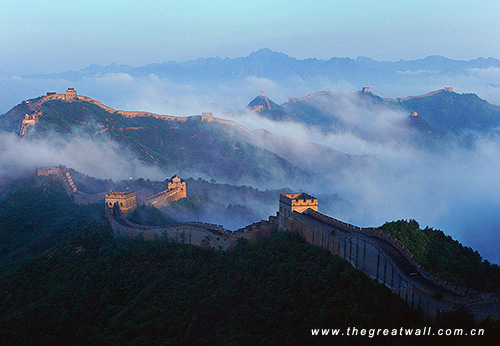|
|
 |
| |
Who built the Great Wall? When and why?
|
|
|
|
Actually,
China is not the only country in history that built wall along
its boundary. Athens, the Roman Empire, Denmark and Korea all
did so at certain time in the past. The Hadrian's Wall in northern
England, built "to separate the Romans from the barbarians",
extended 117 kilometres from Wallsend-on-Tyne in the east to Bowness-on-Solway
in the west. All the walls were built for the purpose of military
defence, and the Great Wall of China was no exception.
Yet the Great Wall is unique. It was
first built in the 7th century B.C. when China was still divided
into many small states. After the unification of China in 221
B.C., the first emperor of Qin Dynasty (you must have heard of
his teracotta army) linked the walls of the three states in the
north and formed the first "Wan Li Chang Cheng" (ten
thousand li Great Wall, li is a Chinese length unit, 2 li = 1
km). Since then, the Great Wall was
rebuilt, modified or extended throughout Chinese history for over
2,000 years. Most of the Great Wall we see today was built in
the Ming Dynasty (1368-1644). In some areas, two walls built in
two different dynasties can be seen running side by side. For
a more detailed history of China and the Great Wall, please click here.

Based on the technology available at
different dynasties, the Great Wall was usually built with local
materials, mostly earth and stones. Natural terrain such as mountain
ridges was often taken advantage of to form part of the wall.
West Han Dynasty (206 B.C. - 25 A.D.), for example, used sand
and crushed stones filled with layers of reeds or tamarisk twigs
to build the wall in grasslands and desert areas that are subject
to strong wind erosion.
(Written by e99, Photograph by Zhou Wanping & Dama)
|
|
|
|

